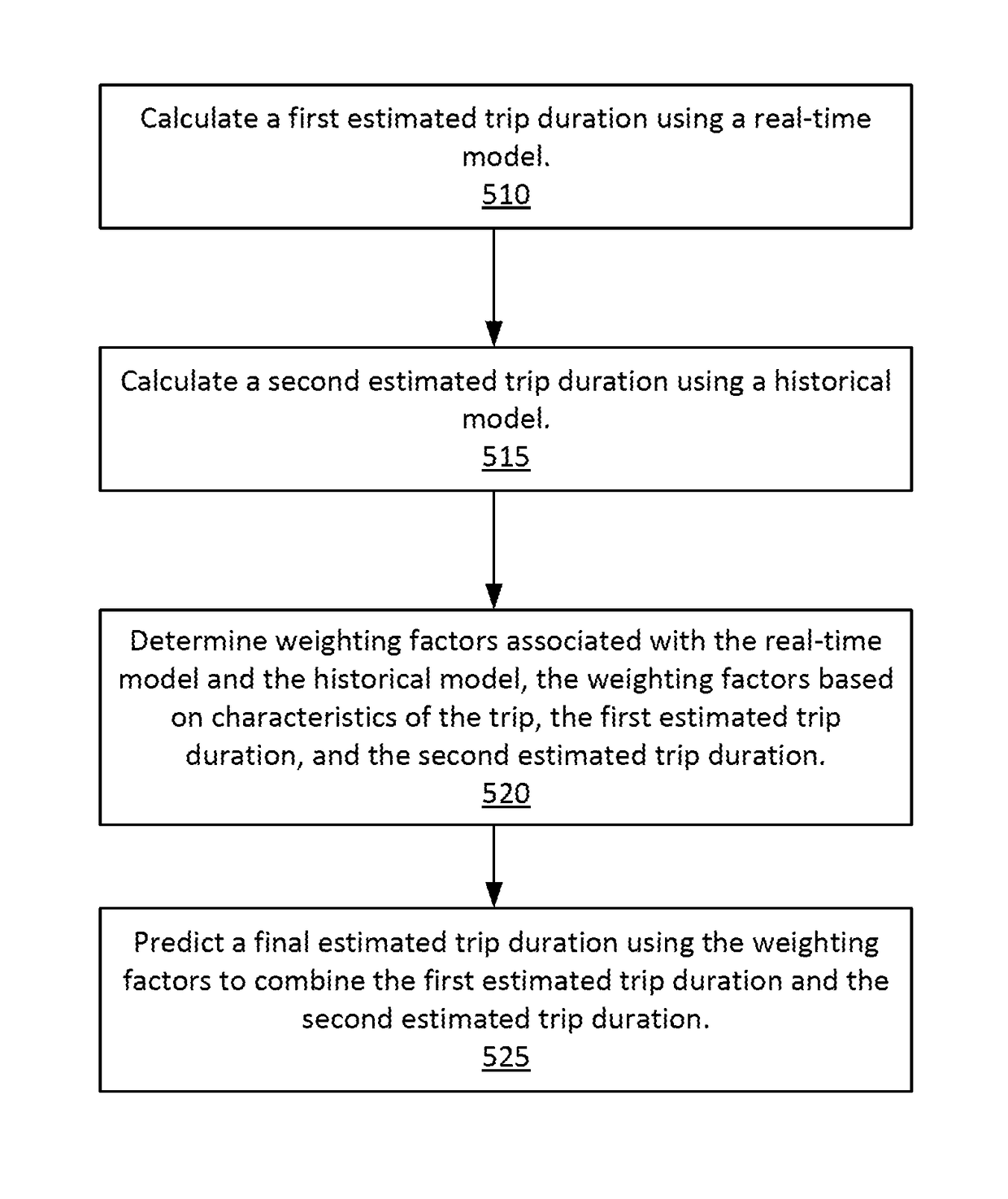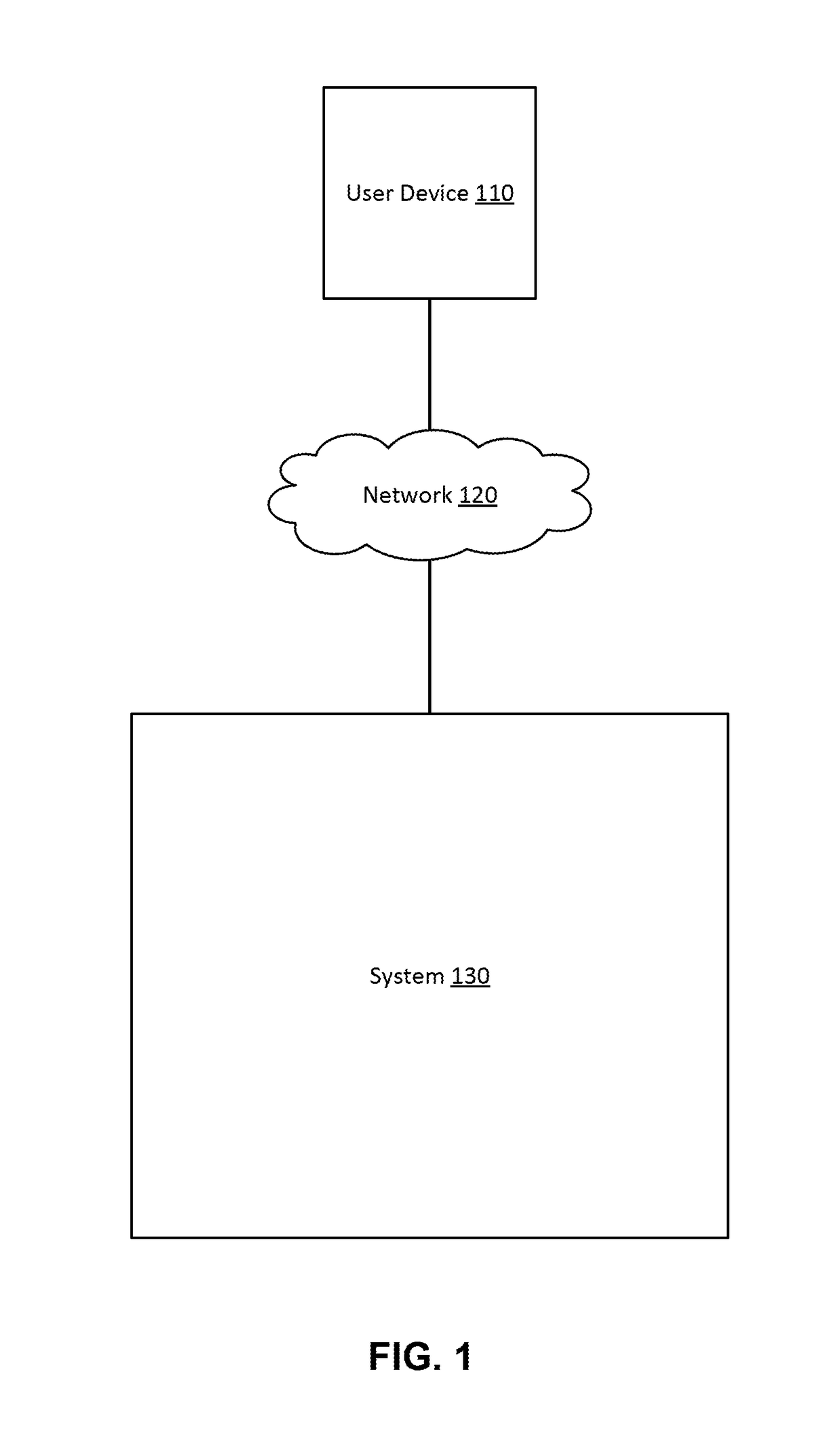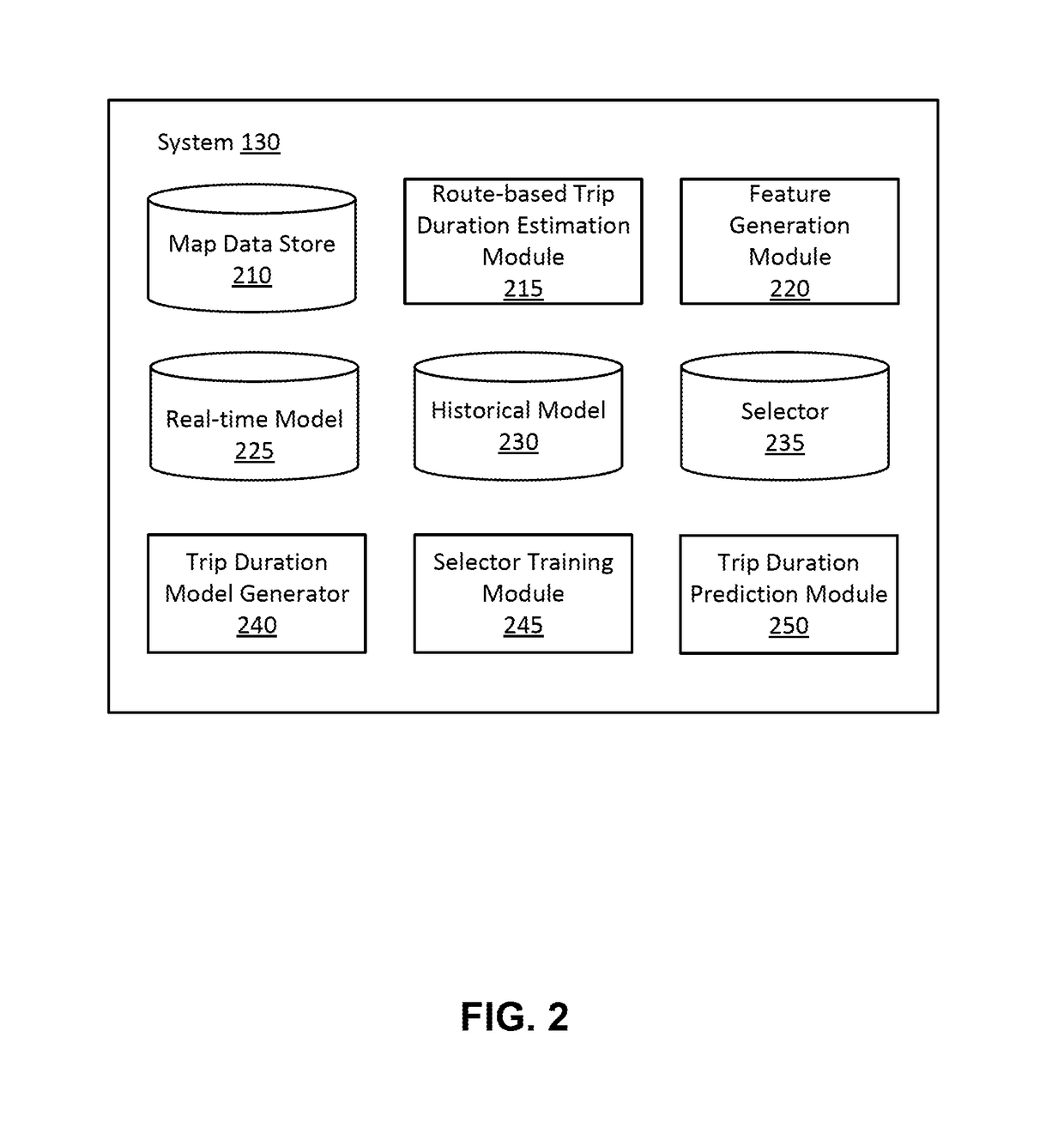Generation of trip estimates using real-time data and historical data
a technology of historical data and trip duration, applied in the field of estimating trip duration, can solve the problems of inability to accurately estimate trip duration, inability to account for extra travel time that may be incurred at intersections, and inability to accurately predict current trip duration. to achieve the effect of accurately predicting current trip duration
- Summary
- Abstract
- Description
- Claims
- Application Information
AI Technical Summary
Benefits of technology
Problems solved by technology
Method used
Image
Examples
Embodiment Construction
[0019]A system trains models to estimate trip durations using real-time trip data and historical trip data. A historical model is trained to estimate trip durations with training data that may include characteristics about trips that have completed in a prior time period, such as within a past week, month, year, etc. A real-time model for estimating trip durations is frequently retrained using characteristics of recently completed trips as training data. In one embodiment, the real-time model is trained using batches of data collected from recent trips. That is, training data may be incorporated into the real-time model to account for recent trip activity. The historical model and the real-time model may also be trained to adjust or improve a prediction from another trip prediction system, such as a network-based trip estimate. The network-based trip estimate may predict an initial trip duration estimate by modeling road segments as edges between nodes in a graph, and the historical...
PUM
 Login to View More
Login to View More Abstract
Description
Claims
Application Information
 Login to View More
Login to View More - R&D
- Intellectual Property
- Life Sciences
- Materials
- Tech Scout
- Unparalleled Data Quality
- Higher Quality Content
- 60% Fewer Hallucinations
Browse by: Latest US Patents, China's latest patents, Technical Efficacy Thesaurus, Application Domain, Technology Topic, Popular Technical Reports.
© 2025 PatSnap. All rights reserved.Legal|Privacy policy|Modern Slavery Act Transparency Statement|Sitemap|About US| Contact US: help@patsnap.com



